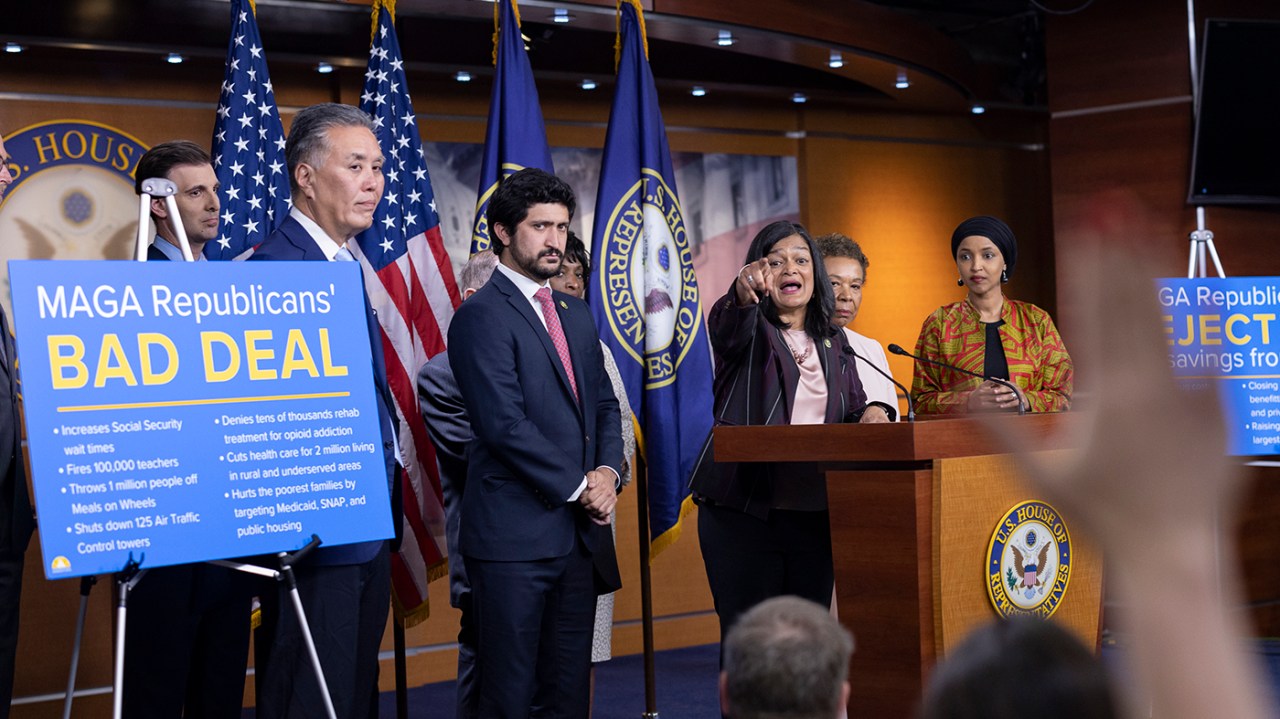The Democratic Party’s progressive wing has been through many iterations – from the upstart insurgency of Sen. Bernie Sanders (I-Vt.) in 2016 to the 2018 primary upsets inspired by Rep. Alexandria Ocasio-Cortez (D-N.Y.) and the expanding Squad of 2022.
Now, at the start of the 2024 election cycle, the movement has seen even more promising levels of diversity, particularly among Black and brown communities, with many on the left hoping to redefine the party around their flank.
“Who and what does a progressive look like?” asked Danielle Deiseroth, a former Sanders campaign operative who now serves as executive director of the left-wing polling firm Data for Progress. “The progressive wing of the party increasingly becoming a bigger part of the Democratic base is really bringing that image more mainstream.”
“Not every progressive looks like Bernie Sanders,” she said.
Elected leaders, strategists, and grassroots organizers want the diversity evolution to show what modern leftism can look like in generations to come. The transition has been deliberate and gradual, with many seeking to course-correct the white male stereotype that defined the narrative around the early Sanders phenomenon.
“The diversity of progressives in Congress from Maxwell Frost to Greg Casar to Delia Ramirez and so many others is a strength for America,” Rep. Ro Khanna (D-Calif.) told The Hill.
“There is a new generation of progressives in the House and their diversity and lived experiences are driving a big tent movement to uplift all Americans – especially those who have been forgotten or ignored for too long. It’s exciting to see the rush of ideas and new issues like water breaks for workers get the attention they deserve,” he said.
Ocasio-Cortez’s emergence onto the scene helped jumpstart that shift. She shocked the nation when, as a millennial Latina with modest roots, she successfully beat a wealthy former Rep. Joseph Crowley, a white man entrenched in the Democratic establishment class, setting the groundwork for more candidates to claim their own successes.
Just a few years later, more candidates of color, including Reps. Cori Bush (D-MO), who has been candid about previously being homeless, Jamaal Bowman (D-N.Y.), a former school principal, and Summer Lee, an organizer and community advocate, won in 2018, 2020, and 2022, respectively.
“A progressive can look like Summer Lee, they can look like Jammal Bowman, they can look like Alexandria Ocasio-Cortez,” said Deiseroth. “The next generation of progressive leaders is really showcasing what every progressive looks like.”
Left-wing candidates’ strategies are often tied to their personal narratives in a way that few other mainstream Democrats can replicate. Politicians of all stripes use their lived experience as a tactic, but advisers who have worked closely with liberal contenders say their relatable, sometimes hardscrabble stories can be key to the movement’s growth in diversity and numbers.
Many progressive candidates have found success by speaking candidly about everyday hardships like struggling to pay off student loans or afford housing and food. And in a political climate rife with spin and special interests, it’s been a way for candidates to level with people.
In recent cycles, those candidates have overwhelmingly hailed from racially diverse backgrounds, making their wins even more critical as the wing tries to outgrow its image of nearly five cycles ago.
“The progressive movement has always been multiracial, working class,” said Joseph Geevarghese, the executive director of Our Revolution, a leading activist group aligned with Sanders. “The Bernie movement has been incredibly diverse, and it’s gotten even more diverse.”
“That’s a function of the movement’s message permeating deeper and deeper,” he said.
While the left’s policy priorities are consistent with agenda items like economic equality, universal health care, and climate justice at the forefront, the focus on electing and keeping new Capitol Hill leaders to help push those goals has ramped up.
In turn, candidates’ stories have become powerful entry points for discussing the progressive platform. And as systematic racism further hinders progress in every major sector, progressives say candidates of color have made credible pitches for reform.
“Young, progressive people of color are taking over,” said Aru Shiney-Ajay, a national spokesperson for the Sunrise Movement, a youth-led disruptor force seeking climate reforms.
“From the halls of Congress to voting on the local, state and federal level, we’re fighting for progressive, common-sense solutions,” she said. “And we’re gaining in numbers and power.”
At Data for Progress, Deiseroth has seen firsthand the popularity of progressives’ ideas on diverse communities show up in the polls.



This is the best summary I could come up with:
The Democratic Party’s progressive wing has been through many iterations – from the upstart insurgency of Sen. Bernie Sanders (I-Vt.) in 2016 to the 2018 primary upsets inspired by Rep. Alexandria Ocasio-Cortez (D-N.Y.) and the expanding Squad of 2022.
Politicians of all stripes use their lived experience as a tactic, but advisers who have worked closely with liberal contenders say their relatable, sometimes hardscrabble stories can be key to the movement’s growth in diversity and numbers.
While the left’s policy priorities are consistent with agenda items like economic equality, universal health care, and climate justice at the forefront, the focus on electing and keeping new Capitol Hill leaders to help push those goals has ramped up.
“Young, progressive people of color are taking over,” said Aru Shiney-Ajay, a national spokesperson for the Sunrise Movement, a youth-led disruptor force seeking climate reforms.
In California’s 12th Congressional District, for example, two Black progressive women are angling to diversify the party through racial justice activism and decades of deeply rooted community work.
Lateefah Simon, a civil rights leader and member of the Bay Area Rapid Transit board of directors, hopes to rise to power as another leading racial justice advocate, Rep. Barbra Lee (D-CA), tries to ascend to higher office.
The original article contains 1,157 words, the summary contains 205 words. Saved 82%. I’m a bot and I’m open source!
Cool